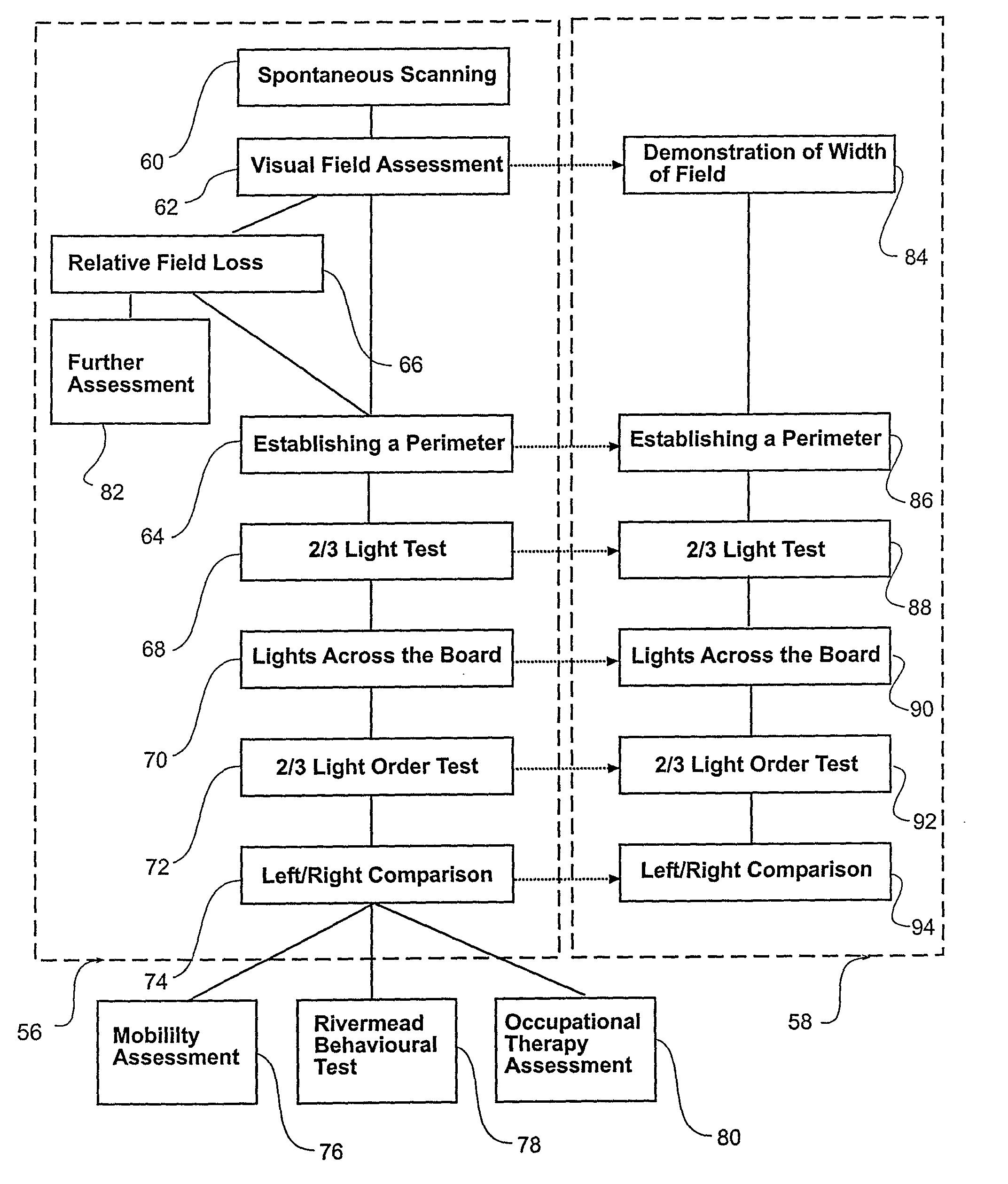Apparatus and method for assessment and rehabilitation after acquired brain injury
a technology of acquired brain injury and apparatus, applied in the field of apparatus and method for the assessment and rehabilitation of vision impairment, can solve the problems of brain injury, impaired vision, significant reduction of the visual field of the person, etc., and achieve the effect of reducing the amount of prompting and enhancing the degree of head and eye turn
- Summary
- Abstract
- Description
- Claims
- Application Information
AI Technical Summary
Benefits of technology
Problems solved by technology
Method used
Image
Examples
Embodiment Construction
[0029]The following detailed description of the invention refers to the accompanying drawings. Although the description includes exemplary embodiments, other embodiments are possible, and changes may be made to the embodiments described without departing from the spirit and scope of the invention.
[0030]FIG. 1 shows an apparatus for the assessment and rehabilitation of a client suffering vision impairment resulting from an acquired brain injury. The apparatus or scanning device 30 is the preferred embodiment of the present invention and consists of an array of visual stimuli arranged on a rectangular display board or panel 32 to assess and rehabilitate the client's visual range.
[0031]The client, requiring assessment and rehabilitation for impaired vision following an acquired brain injury, is seated in front of the scanning device 30 and approximately 300 mm away from the visual stimuli display board 32. The client is positioned so that his / her eye level is aligned with the central d...
PUM
 Login to View More
Login to View More Abstract
Description
Claims
Application Information
 Login to View More
Login to View More - R&D
- Intellectual Property
- Life Sciences
- Materials
- Tech Scout
- Unparalleled Data Quality
- Higher Quality Content
- 60% Fewer Hallucinations
Browse by: Latest US Patents, China's latest patents, Technical Efficacy Thesaurus, Application Domain, Technology Topic, Popular Technical Reports.
© 2025 PatSnap. All rights reserved.Legal|Privacy policy|Modern Slavery Act Transparency Statement|Sitemap|About US| Contact US: help@patsnap.com



